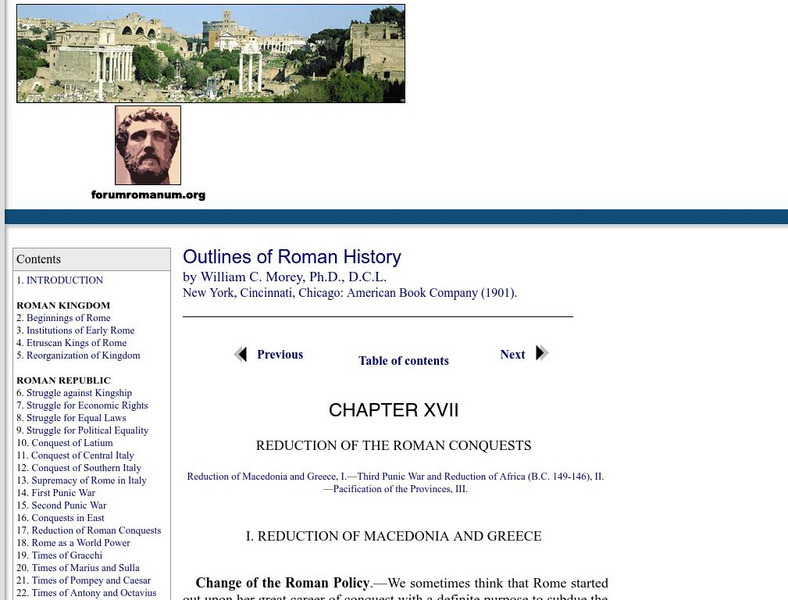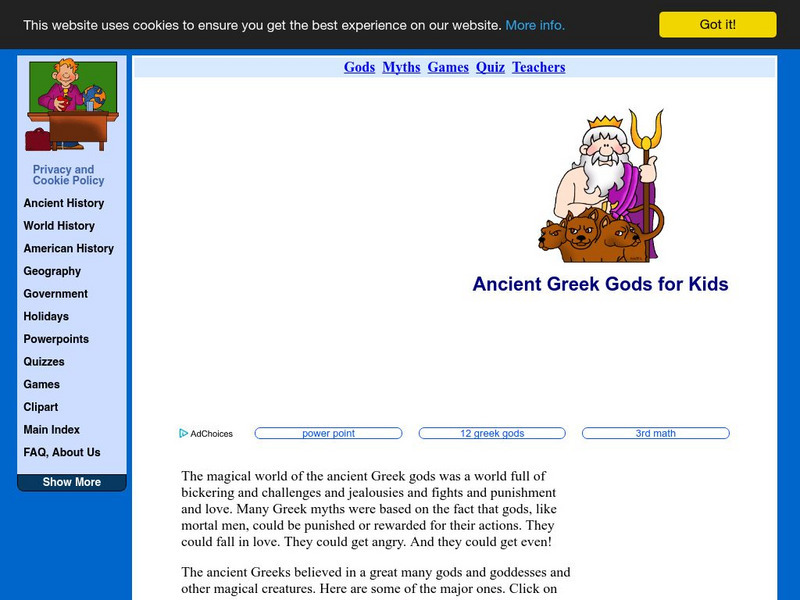Curated OER
Archaeology: Quiz 57
For this archaeology worksheet, students answer multiple choice questions about kings, silk, and more. Students complete 4 questions total.
Curated OER
The Xmas Factor
Students examine the mass marketing of Christmas. For this gift giving lesson, students visit selected websites to discover the history behind gift-giving, research marketing techniques, and consider giving alternative gifts.
Curated OER
Microbes & History: Microbial influence on the spread of Civilization
Students explore how to extract plant fibers from the flax plant Linum usitatissimum in the process of making linen fibers. Doing so spark interest in the importance of microbial action on the spread of human culture and civilization.
Curated OER
Goddesses are Personifications Too!
Students analyze the use of personification in classical Greek art and the Neoclassical period. In this Neoclassical art lesson, students discuss the cultural values reflected in classical and Neoclassical....
Curated OER
Referencing the Classical Past
Students discuss the sculptural group of Three Goddessesby Joseph Nollekens in a study of the classical past. In this Classical history instructional activity, students describe the three figures in the painting and read an excerpt for...
Curated OER
Introduction to Greek Theatre
Students create a tableau for a Greek myth. In this introduction to Greek theatre lesson, students discuss the history of Greek theatre and tableau and complete a handout. Students work in groups to choose a myth and create a...
Curated OER
Primary History: Viking Family Life
In this Viking history worksheet, students complete 3 extension activities that help them learn about Viking family life. Students write about the life of a Viking slave, research the life of Viking children, and make a list of the...
Curated OER
CSAP Preparation: "Strike While the Iron is Hot"
Students survey several concepts in literature, science, history, and geography as a preparation for the CSAP standardized testing experience. This nine lesson unit provides exposure to the format and content of the test.
Curated OER
Pumpkin Seeds Mosaic
Learners examine the history of mosaics. They follow instructions to create their own pumpkin seed mosaic. They also bake some of the seeds to enjoy as a treat.
Curated OER
Literature
Third graders study phrases, poetry and myths of Ancient Greece and Rome in these lessons.
Curated OER
Papyrus
Students study what papyrus was and what it was used for. Students explore how papyrus was made, and the two writing systems hieroglyphics and cuneiform.
Curated OER
Explorit's Green Salad Quiz
In this food history worksheet, students read the information about the history of food and salads. Students select the correct answer for the 6 related questions.
Curated OER
Wrestling
In this reading comprehension instructional activity, students read a one paragraph text about wrestling. Students answer one multiple choice question.
Curated OER
The Use of Myths in Science
Students examine folk tales to determine the basis for scientific myths. They demonstrate through the discussion of the folk tales that the perception of the world has changed as new information is gained. They write their own folk...
Curated OER
Goddesses Are Personifications Too!
Young scholars explore the use of personification as a way of expressing ideals. They transfer this understanding to the present by creating an allegorical depiction of a contemporary ideal or value inspired by precedents in the...
Curated OER
Mother's Day: Reading Comprehension
In this reading comprehension activity learning exercise, students read a 10 paragraph selection entitled "Mother's Day". Students respond to 10 multiple choice questions pertaining to the passage.
Curated OER
Celebrations
In this celebrations worksheet, students choose the correct word to complete the sentences about different celebrations. Students complete 10 multiple choice questions.
Curated OER
Holidays
In this holidays worksheet, students choose the correct word to complete the sentences about different holidays around the world. Students complete 10 multiple choice questions.
Curated OER
Goddesses Are Personifications Too!
Students discover the use of personification as a way of expressing ideals. In this Language Arts lesson, students create an allegorical depiction of a contemporary ideal. Students write labels that clearly support the...
Curated OER
Who are American Citizens?
Students investigate American citizenship. In this civics activity, students consider the basic knowledge of U. S. government new citizens are required to have. Students also examine the 14th amendment that describes U. S. citizenship.
Khan Academy
Khan Academy: Greco Roman
Instead of rule by a single person, Athens and Rome developed governments with widespread participation by male elites, which lasted about 170 years in Athens and about 480 years in Rome. This article discusses the rise of the Greek and...
Forum Romanum
Outlines of Roman History:reduction of Macedonia and Greece
As Rome expands her boundaries, she has to figure out how to treat the conquered lands. This site shows Rome trying different options and finally settling on the idea of provinces.
Lin and Don Donn
Mr. Donn: Ancient Greek and Roman Gods and Goddesses
A listing of Greek Gods and Goddesses and their Roman counterparts as well as what each God represented. Click on each name to access a more detailed description.























